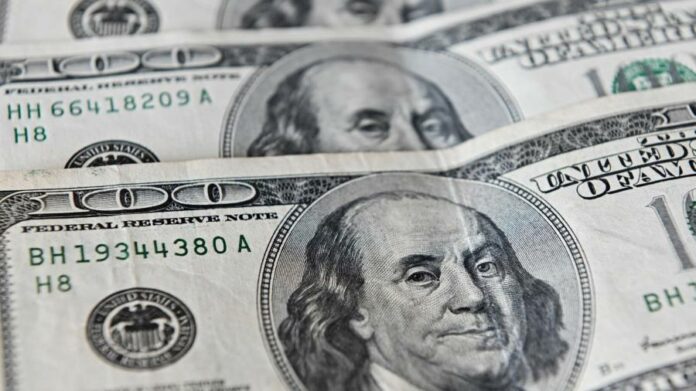The writer is director of Belgrave Capital Management and Banca del Ceresio
The dollar has strengthened by about 20 per cent in the past year and pundits generally attribute this performance to rising interest rates and to “haven” buying at times of turbulence.
While the first reason seems more accurate, the main channel through which rising US rates impact the dollar is little understood despite the vast implications it has for the current set up of the international monetary system.
The rise in value of the dollar in a crisis is often interpreted as a flight to a perceived haven but in reality much of it is due to the need of non-US investors to buy dollars to cover losses on dollar assets or reduce the hedges on them.
After decades of chronic current account deficits, the US has attracted vast amounts of foreign capital to finance them and has accumulated a deficit of external financial assets compared with liabilities of more than $18.5tn. Foreigners currently own more than $14tn in dollar-denominated bonds. About half is held as official reserves, with the rest mostly in the hands of investors in countries with chronic current account surpluses.
Foreign institutional investors most likely hedge the currency risk on their dollar-denominated bonds. For any investor with a risk budget or under risk-based regulation, owning a foreign bond without hedges is unappealing, given the volatility of currencies.
Also, supported by academic studies, investors have developed more conviction on the direction of interest rates and equity markets than on currencies. So they often prefer to bet on the former but hedge the latter. They usually hedge their exposures by selling the greenback and agreeing to buy their home currency at a future date.
Over the past year, investors have suffered substantial losses as the price of bonds fell worldwide as interest rates have risen. And since the value of their dollar bond portfolios fell, foreign investors had to adjust their hedges down, buying back dollars and selling their home currencies.
This is an activity usually carried out by back offices which at least on a quarterly basis adjust the size of their currency hedges to the value of the portfolio. Accurate data on how much of the foreign holdings of dollar bonds is actually hedged is not available. But about the half of the $14tn in dollar-denominated bonds held as official reserves is not hedged. We could assume though about half of the $7tn remainder, or £3.5tn, is hedged. Losses on US bond portfolios have been around 20 per cent this year, so the proportion of hedges being unwound would have been around that level.
That means foreign investors would have bought back around $700bn, an amount likely to be way larger than the speculative flows chasing the dollar up for whatever other reason.
The adjustment of hedges is hence a determining factor explaining the dollar strength over past year. We have seen similar patterns in recent crises. The alternative explanation of haven dollar-buying was never convincing in cases like the financial crisis, when the US was suffering from failing banks in the middle of a real estate crisis.
If my hypothesis is correct, there are profound implications for our floating exchange rates system. One of the key ways that international imbalances were expected to remain contained was that a chronic current account deficit country such as the US would at some point suffer a currency depreciation because foreign investors would become saturated with the risk of dollar-denominated assets. This depreciation would then help the US rebalance its current account.
But a Dutch pension fund, say, owning Treasuries on a hedged basis is unlikely to be saturated by US risk. That is because on one hand the Treasury will not default on its obligations as it may print dollars to repay them. And, on the other, the risk that excess dollar printing will lead to a devaluation is taken care of by currency hedging. This way surplus countries are ready to accumulate more liabilities of deficit nations.
As this happens, the financing of imbalances adds to cross-border financial flows that keep growing. The US debt to foreigners increases, as do their claims on the US. The financial system is required to intermediate these ever-growing balances, straining bank balance sheets.
More fundamentally, chronic imbalances increase measures of potential financial instability such as debt to gross domestic product ratios. We need to address these new and little-recognised dynamics before the international financial system accumulates more risk than it may bear.






